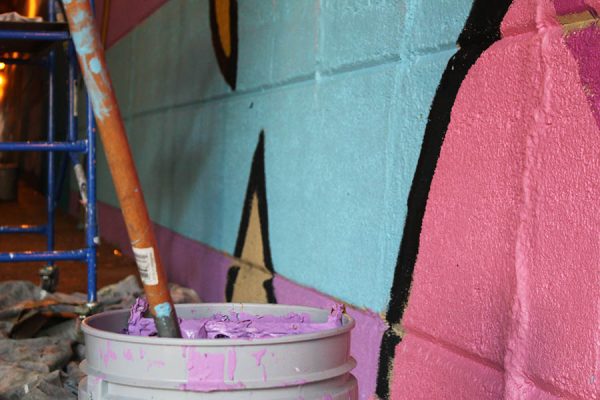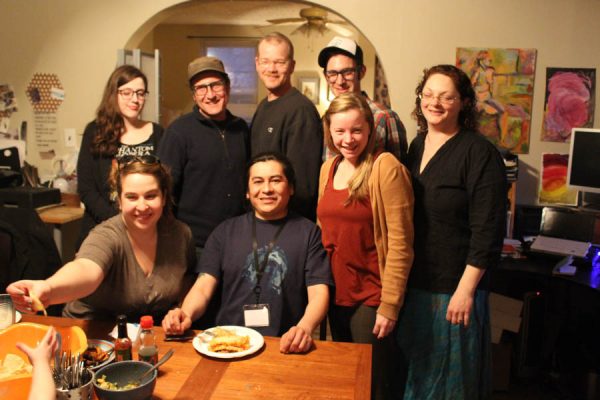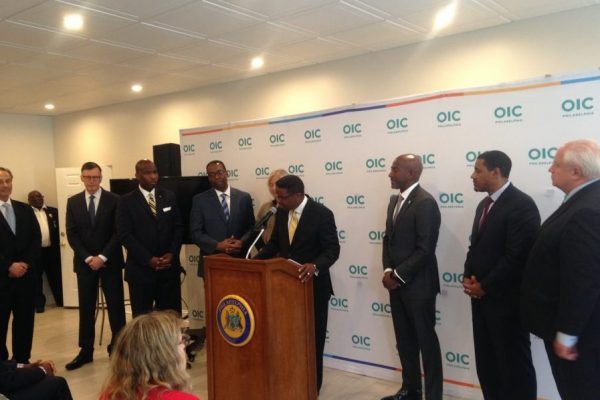For years I have heard stories about Key West, Florida. The island city, after all, is the land of Tennessee Williams and Ernest Hemingway. Hemingway, in fact, called Key West “the St. Tropez of the Poor.” I only recently made it to Key West to see this mythic party land under the palms for myself.
During my four day stay in Key West last month (just a few short weeks before the city’s most notorious street festival, Fantasy Fest, in which festival goers walk the sidewalks naked or nearly naked) I didn’t see police cars patrolling the streets or even parked off to the side waiting for something to happen. Police presence seemed minimal, although I did spot two squad cars at the scene of an auto accident. I later encountered two officers when the street where my hotel was located was closed off due to construction. The officers rerouting traffic resembled movie extras with their gelled hair, buff bodies and glittering dental veneers. In a glamorous town, even the police have to look the part.
“Hello, would you please take the sidewalk detour across the street. If you stay on this street you’ll get your clothes dirty because of the construction,” the most Hollywood looking of the two officers said to me.
“Maybe it’s something in the water,” I said to my traveling companion, “but I like it. Were they really cops?”
I was also struck by how one can drink alcohol openly in the streets of Key West and that the city features sidewalk bars that are as easily accessible as a Rita’s Water Ice stand. You can buy a Jack Daniels to-go; craft beer in 7-Eleven-style Slurpee containers; wine in a canteen or in a plastic bag. The more standardized bars have large parking lot-sized patios dotted with tables and umbrellas and most of these places are crowded by 10AM. While walking along Duval Street near the crack of dawn I saw seasoned, well-coiffed women in large sunglasses downing tropical drinks with their ham and eggs. On other bar patios I spotted unkempt looking biker babes (with whisky voices) laughing it up with their kerchief-headed biker men.
Key West is really a Puritan’s nightmare where you’ll find six-foot tall drag queens mixing in with party-hardy couples and their children. At one drag show I attended a family sat in the front row. The MC, a drag queen with a beehive-shaped white wig, asked for a male volunteer and an 18-year old guy visiting with his parents and sister raised his hand. By the end of the night he had become the brunt of raunchy bathroom humor. After the onstage antics were over, his family had to pull him out of the bar.
“It’s time to go, Kevin,” his sister pleaded, yanking his arm. “We can’t stay here all night.”
At night Key West’s street scene intensifies, especially at Sloppy Joe’s, Hemingway’s old hangout, although the bar was moved from its original location across the street in 1937. Hemingway hung out at Sloppy Joe’s with his drinking “mob” — which sometimes included writer John Dos Passos. The design of the bar enables passerby to peek in at the crowd and live bands (and buy drinks) from a horse stall-shaped window that meets the sidewalk. The place is filled with Hemingway memorabilia, including portraits of the old master framed like icons in an Orthodox church. While there’s definitely somewhat of a honky-tonk atmosphere in Key West, it never plunges to the cotton candy level of, say, the Wildwood boardwalk.
But even intense party towns have their drawbacks. Talking to the dining room manager at the luxurious Amara Cay hotel in neighboring Islamorada, I learned that the Keys, and especially Key West, attracts the beautiful and the young who can get quick jobs as bartenders or servers. As servers, these young folks can work their good looks to their advantage for big tips, weekend hookups and serial dating opportunities. While not all of the party-seeking Key West transplants live for pleasure, those who do can ride the wave for several years. But I was told that when their beauty fades and the party fizzles out, many find that they have nothing to fall back on. They are left without a real career or authentic friendships, having allowed the island’s party culture to become their cult. The dining room manger told me that suicide is an unfortunate option for some, “They jump into the sea, sometimes from bridges.” And just as they plunge into the ocean and toward their demise, new waves of naive young people are being initiated into Key West’s party cult, hoping for an eternity of bliss.
The Amara Cay manager had other colorful stories to share. When I asked if Key West had a homeless population, she told me that most of the homeless gather on Higgs Beach, which has somewhat of an eerie past. In 1860 three ships carrying Africans slaves to Cuba were diverted from their path by the US Navy and sent to Key West. Of the 1,432 people aboard these ships, 269 died at sea. Shortly after landing on shore an additional 294 others died from diseases and malnutrition as a result of the voyage. They were buried in a mass grave on the beach. The homeless congregate near the beach’s Mango Groves where they often build tents. Compared to what Philadelphia’s homeless go through during the ruthless winter months, Key West’s Mango Grove hideaway has an idyllic feel right out of that Daniel Defoe classic, Robinson Crusoe.
As the most southern point in the nation — just 90 miles from Cuba — Key West doesn’t seem like a part of the United States in many ways. Even getting there can be a challenge: Unless you fly directly in from Miami on a small jet, most visitors wind up flying to Miami and then renting a car or taking a shuttle bus over the immense 150 mile causeway.
The Overseas Highway, or “the Highway that Goes to Sea,” follows the path of a railroad that was built in 1912 by Henry Flagler. Flagler’s idea was to extend his Florida East Coast Railroad from Miami to Key West. The railroad’s opening was world news, but the year 1935 saw its demise. Hurricane weather and high winds destroyed much of the track, but since the cost of rebuilding the railroad during the Great Depression was prohibitive, 113 miles of roadway was constructed and along with 42 bridges connecting the various Florida Keys. Driving the stretch from Miami can take three hours, but on a dark and stormy night, expect the unexpected.
Upon arriving at Miami International, I headed to the Dollar Rent A Car counter where I waited for more than an hour with forty other people. Only two processing clerks were on duty at the time, which did not make things easy.
Out of town drivers in Miami have to be careful of unmarked or discreetly marked toll roads that have nothing in common with the human staffed toll booths of yesteryear. As a Dollar Rent A Car customer I had the option of purchasing a general toll pass sticker or paying up later in case I inadvertently drove onto a toll road. Toll road cameras record the license plates of all drivers who enter a toll zone, but the problem is that you usually don’t know you are driving onto a toll road. Many toll road markings are small; in some cases there are no markings or warnings at all. For a newcomer to Miami, the stress of looking out for tolls while navigating unfamiliar roads and dealing with impatient drivers has all the ingredients of a Halloween nightmare. And should your eye not catch those small lettered toll road warnings, watch for a notice and a fine to arrive two weeks later in the mail. Those hidden Orwellian cameras that record your license plate number do their job!
In my little red Mazda, I screeched to sudden stops and did fast U-turns to avoid suspected toll roads before finally finding Route 1, the “no toll” straight-away that traverses the Keys via those concrete and steel sea bridges.
Friends warned me about driving Route 1, “Yes, the views are spectacular, there’s all that open sea, but the monotonous ‘straight ahead’ driving can put you in a trance. People have been known to fall asleep on Route 1.”
But you won’t fall asleep if there’s a rainstorm. Somewhere before my traveling companion and I hit Key Largo — the first Key on the long chain — the skies opened up, thunder roared and lightning reminded us of our mortality. We discovered that driving over the 42 sea bridges is much like piloting a boat at sea. The streaks of lightning that hit the water in violent, Zeus-like jolts slowed our speed to twenty five miles an hour. At one point we could not even see the road in front of us. For a moment we wondered if we would ever make it to Key West.
In my mind’s eye, I kept seeing the following newspaper headline: LITTLE RED MAZDA PLUNGES INTO THE OCEAN NEAR KEY LARGO.
We pulled into Key West’s Chelsea House Hotel on Truman Street well past 9PM, two hours behind schedule. We were shown our rooms and the pavilion breakfast area where in the coming days we would chat with travelers from France and Germany, a fisherman from Oklahoma, an IT computer tech guy from Brooklyn and a retired government official who would not tell us what branch of the government he retired from.
“I can’t tell you that,” he said, smiling a Cheshire cat grin. Naturally, I wondered if he had ever killed anyone.
In the trees surrounding the breakfast patio we spotted iguanas of many different sizes. An iguana as large as a small alligator caused one Chelsea House guest to scream, but most of the ones we saw were not much bigger than a preying mantis. They would circle our breakfast table as we munched on muffins and fresh fruit. Iguanas are not native to Key West, but were brought to the island as pets from Puerto Rico. Key West inhabitants hate them because they eat vegetation and destroy the trees.
On our first night in Key West, we headed over to the local CVS where we bought a bottle of cold chardonnay, a jar of Salsa, chips and a bag of organic popcorn and called it dinner. The fact that you could buy wine in an ordinary Key West CVS made those Philly CVS’ with their Arctic Splash and diet soda coolers seem pretty dull, indeed.






